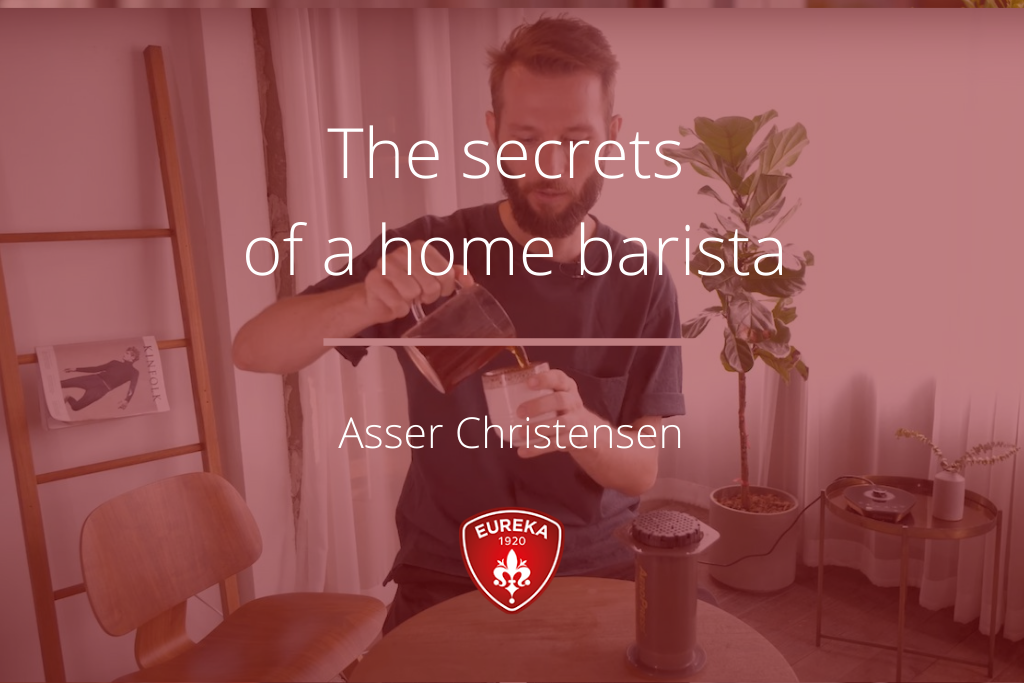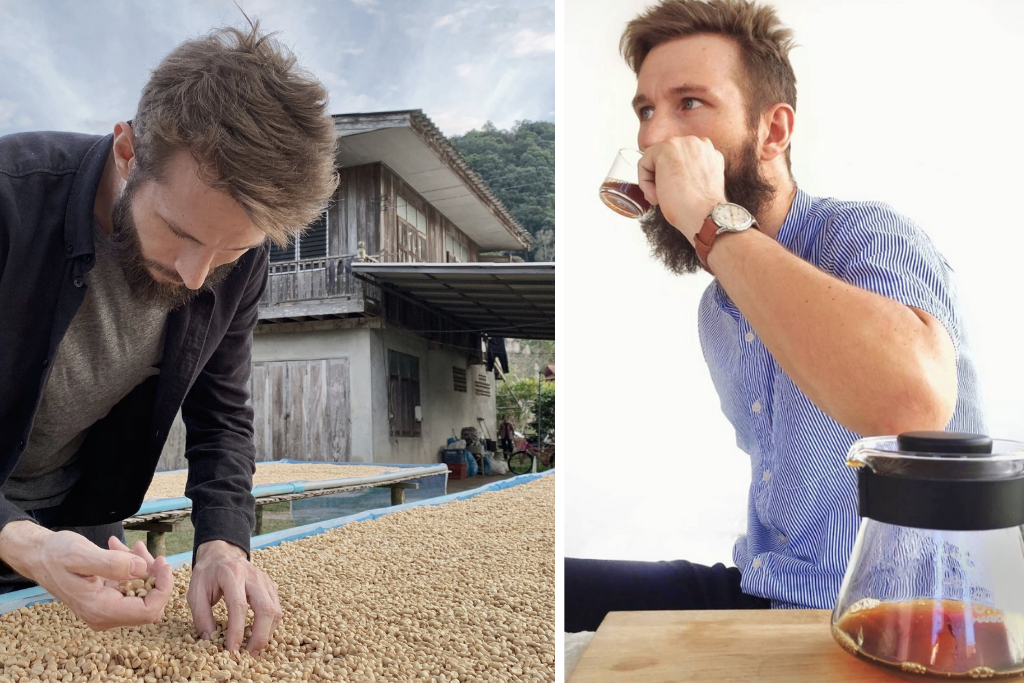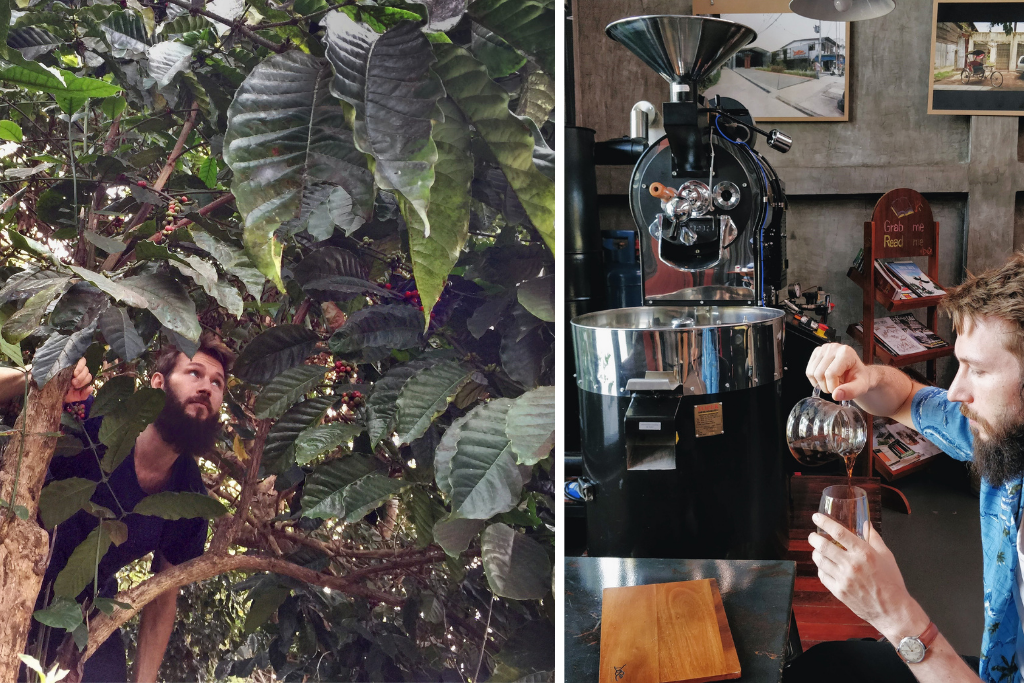Eureka Blog
The secrets of a home barista: a chat with Asser Christensen

How many of us can call ourselves a "home barista with caffeine in the blood and coffee on the brain"? When we came across this vivid definition, we thought we had a lot in common with its author, and that it would be interesting to host his point of view on our shared passion in this space! So here we are with Asser Christensen, Danish Q Grader and Coffee Journalist, very active on social media and very inclined to travel, with coffee as their daily guiding star! The first home barista to our microphones: will it be just the first of a long series?!
Asser, tell us about your passion for coffee and the choices you have made in your lifestyle for it.
I have been fascinated with coffee since a very early age. I remember that I bought a Bodum French press when I was in primary school. I also started to roast coffee at home quite early. My inspiration was my uncle, who was a home roaster. I remember that his favorite bean was the Indian Monsooned Malabar. He also had a La Pavoni lever machine, which was a rare sight back then.
But coffee also involved a lot of frustration for me. Sometimes my beans would taste terrific, while other times, they would be horrible, and I would question whether my roasting hobby was fruitful. I didn’t have any idea about what I was doing. I had no concept of extraction theory, and I was always trying new brewing methods before mastering the basics. Back then, coffee knowledge was more hidden and esoteric. The third wave was still a tiny underground phenomenon.
However, in 2010 I came across the Hario V60 and the Japanese brewing style today known as “osmotic flow”. I was suddenly able to pull out all these flavors that I had dreamed about when I went into coffee roasting. This discovery reignited my coffee passion.
Since I was working as a journalist, I wanted to combine my job and passion. I wrote some articles about coffee and quickly ended up starting a coffee blog. My love for coffee led me to visit coffee farms in foreign countries and to interview fascinating people. Before I realized it, coffee had become my full-time focus. In 2018 I started my blog The Coffee Chronicler, became a licensed Q Grader, and it was also around that time I began writing about coffee full time.
What is your advice for a coffee lover who want to grow in his passion?
The quickest way to accelerate your coffee knowledge is to start cupping. If you can attend a cupping with professionals, then do that. I think home roasting is also a great window into the alchemy of coffee.

The home barista and his coffee corner: the characteristics of a love story!
What is the relationship of a home barista with his favourite corner of the house? What influences his choices, and which aspects have the greatest impact on his daily coffee experience? Asser gives us his point of view, the result of an experience gained over the years.
How important is the equipment in the perfect home coffee corner? And how difficult is it to fine-tune it?
I would say that the equipment is quite essential, but only up to a certain point. In the end, the coffee beans and the water quality are probably more important. Even with the most expensive equipment, it is impossible to get a great result with subpar beans and hard tap water.
I will also say that it is important to know your equipment well. If you know the strength and weakness of a specific grinder or espresso machine, it is a lot easier to work around it and get great results anyway.
Currently, I do many product reviews, and it means that I am drinking a lot of bad coffee, even though the equipment is good. It takes a while to dial in a grinder, season the burrs, and find the extraction sweet spot.
With coffee, you only want to change one variable at a time, so the more familiar you are with your equipment, the easier it is to get great results.
Can you tell us about the role of accessories in the coffee experience?
Most of my followers are people who love coffee but are still “normal” people. Their wives will get angry if they spend 2000 euros on a grinder or new espresso machine. So, I’m constantly testing new small accessories that can elevate the coffee experience without breaking the budget.
Luckily, small details can often make a huge difference. A gadget like the Gabi Master B or Melodrip can really change the cup. When it comes to espresso, many people are also starting to realize the value of good distribution tools.
Coffee in northern Europe: an ever-developing culture
Let’s enjoy Asser’s availability to also look at northern Europe coffee culture in its broader meaning, highlighting the most important aspects of local consumers, the tastes and expectations which make them coffee lovers, and the trends which have defined the sector in the last few years, very dynamic and interesting for all home baristas there.
In your opinion, what are the characteristics which define the northern European consumer?
Third-wave coffee has become more widespread in Northern Europe in recent years, but I would still call it a subculture. Some of the early pioneers of specialty coffee, such as Tim Wendelboe and The Coffee Collective, are from Scandinavia, and they have affected the industry a great deal. But there is still a big divide between the coffee industry and regular consumers. So even though there are many roasters today who are focusing on light single-origin beans, most of the consumers favor more developed roasts for espresso and milk-based drinks.
Somehow, I think it makes sense. In Scandinavia, people have been drinking filter coffee at home for many years, so when they go to the coffee shop, they want to order something special that they cannot get at home. A macchiato is still more exotic than a cup of filter coffee to most consumers.
Are there similarities and points of contact with other coffee consumption regions in your experience?
The third wave of coffee has done many great things. There is no doubt that it has raised the standards of coffee quality and created more awareness around the coffee producers.
However, one of the downsides of this coffee philosophy is that coffee shops tend to be similar from country to country. It’s the same roasting philosophy, equipment, menu, and interior design whether you go to a specialty coffee shop in North America, Europe, or Asia.
In a sense, the fascinating thing about Italy is that there is still a unique local coffee culture. I hope that more coffee shops in different parts of the world will find the courage to do something completely different and have their own unique voice.

A coffee at Asser's home: let's take a look at the tastes and routine of a home barista
Let's wrap it up with a couple of questions for our home barista and coffee lover: Asser, tell us more about the flavors and aromas that make your heart beat.
Can you outline the main steps of your morning ritual coffee if you have one?
Most mornings, I start with a pour-over coffee, either Hario V60 or Kalita Wave. I grind 25 grams of coffee and use 400 ml of water. I like this slow and deliberate ritual.
The perfect coffee according to Asser Christensen.
A light (but not too light) Pacamara brewed with a net drip filter. It should have lots of body, texture, and aftertaste without sacrificing clarity and flavor.
I would love to say that I had roasted the coffee, but if it were to be perfect, I should probably leave it to an expert like Rubens Gardelli.
